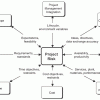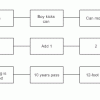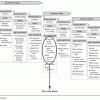Business Transformation Requires Transformational Leaders
Leadership and teaming skills are front and center in times of rapid change. Meet today’s constant disruption head on with expert guidance in leadership, business strategy, transformation, and innovation. Whether the disruption du jour is a digitally-driven upending of traditional business models, the pandemic-driven end to business as usual, or the change-driven challenge of staffing that meets your transformation plans—you’ll be prepared with cutting edge techniques and expert knowledge that enable strategic leadership.
Recently Published
Developing a Resilient Organization Through Risk Management
Writing an article about organizational resilience seems as exciting as reading about the steps for a root canal and expecting readers to get interested in it. From that perspective, it seems prudent to garner some positive reader motivation before diving into the mechanics of this topic.
This survey investigated the extent of organizations’ adoption of application packages, the reasons for adoption, the benefits expected and the benefits realized, software changes, and any difficulties associated with adoption. (Not a member? Download your complimentary copy of the issue here.)
Developing a Resilient Organization Through Risk Management
The past few years have highlighted many newly recognized operational threats resulting from weather, fraud, data loss, terrorism, and other events. With each incident, the level of loss was significant, but an underlying theme revealed the inability of organizations to survive the threats. Some of these situations were so catastrophic that recovery was very difficult, but the recovery could have been easier with prior planning. More significantly, these recent events will likely repeat themselves in some form or fashion.
An Object Lesson in Business Intelligence
When we think of business intelligence (BI), we are describing how technology extracts information from an IT system and manipulates and translates that data into realities that deepen our understanding of some phenomenon in a business; for instance, sales by rep, by product line, or by territory, or manufacturing defect and yield rates by product line, by shift, or by manufacturing location. Any operational activity is a candidate for BI technology.
SOX Lessons Learned: Avoiding Pitfalls in 2006
Now that the US Sarbanes-Oxley Act (SOX) compliance audit for 2005 is concluded, and reports are finalized and filed, it is natural for those involved to begin planning the event for the upcoming year. The cycle begins again with the following questions: What will it be like this year? Will it be as intense? Will it be better? Did we learn anything last year? Did we incorporate anything we learned other than ill feelings? Did any trends emerge? Can we survive another year?
In this issue of CBR, Erica and Sue bring to bear their years of studying enterprise systems (ES) and best practice software implementations to frame the survey. They use the survey as a springboard to draw conclusions about the opportunities and pitfalls presented by the buy-and-make paradigm. But, in good old Cutter style, they don't shy away from challenging vendor (and executive!) rhetoric.
Competitive Bidding: Getting the Right Deal with the Right Supplier
Competitive bidding has been found to be the most common supplier selection technique for outsourcing, with most organizations using a tender (a request for proposal, or RFP) to see how the marketplace would respond to its needs [2]. This approach not only puts pressure on suppliers to deliver their best value for the money against their peers, but it also gives the organization the information it needs to evolve and mature its selection decision.








